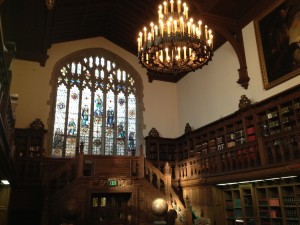Queen Elizabeth in Cyberspace
As you may or may not know, I am–by day–a mild mannered computer programmer, whose job is to devise ways for billions of records to be processed, sorted, analyzed, linked and visualized using the latest and greatest supercomputing technology.
A far cry from Historic Dress, one might be tempted to think. But I’ve found ways to merge my two interests: the Elizabethan Corset Pattern Generator was one of the earlier ones, and my forays into Synonym and Sounds-like searching of historic texts is another.
My most recent all-consuming synthesis of costume and computing is my Wardrobe Concordance. This is a cunning master plan which, at its current rate, should see completion somewhere around 2030.
Cunning Plan Step the first: Here, take this shovel.
Find, Transcribe (or get transcriptions by others) of all the original manuscripts describing Elizabeth I’s wardrobe, and load them into Queen Elizabeth’s Wardrobe Uploaded. Enter in new synonyms for words (like “verdingall” for farthingale, “crammoisy” for crimson, etc) into the glossary as I come across them, so that odd or unusual words are highlighted with their definition available if one hovers over the word.
This step is coming along; I’ve gotten, I would say, about half of Elizabeth’s wardrobe accounts entered so far. As well as a couple of her inventories and a handful of Gift Rolls. There’s about 6,000 individual entries so far. I’m halfway through the corpus; I still have to transcribe, upload and glossarize the 1593-1600 wardrobe warrants, a good copy of the Stowe Inventory, and the wardrobe warrants from 1558-1568 (which are in Latin. That’s going to be fun to learn).
It’s difficult, though; I come across so many other interesting texts and ideas for research that I’m continually distracted from my goal. I have, however, acquired a minion who also enjoys transcribing wardrobe warrants. Little did she know how addictive it would be! Which helps bring my goal a bit closer.
Cunning Plan Step the Second: Open the Wardrobe Doors, Hal.
Find a way to extract information from each entry so that they can be usefully analyzed.earched, analyzed, linked and visualized. What this means is taking an entry like:
Item to the said William Jones for makinge of a highe bodied gowne of greene veluet (for Thomasine our woman dwarf) laied with Siluer Lace the sleuis cut in panes the bodies styffened with canvas and buckeram and laied aboute with buckeram bordered with fustian and pocketts of fustian the bodies faced with Satten cut and lyned with sarcenet the playtes Lyned and a role of cotton with a paire of sleuis of Satten, cut and Lyned with Sarcenet
And turning it into the following:
Action: making. Garment: High bodied gown. Material: velvet. Color: green. Made by: William Jones. Made for: Thomasine de Paris. Date:1588. Lining: sarcenet. Facing: satin. Stiffening: canvas, buckram. Decoration: Silver lace. Garment sections: Sleeves, material satin, lining sarcenet, cut in panes. Bodice: stiffened with canvas,buckram. Roll, made of cotton.
This process is going to require several steps. First: standardizing spellings and terms across the corpus. This is fairly easy, using the glossary I’ve put together already. In fact, I’ve already done this.
The next step: parsing the text. Identifying words as garments, materials, colors, etc.; and, once that’s done, finding a way to figure out what is related to what. (lining material sarcenet, facing satin, sleeves are made of satin, etc.)
If I was rich, I would do what the EEBO did and farm the 10,000 entries like the above out to an offshore transcription company to crunch through. But I’m not rich. I am something even better: a programmer.
A programmer who was graced by extraordinary serendipity in the past few weeks. At work, I was tasked with learning about Natural Language Processing, and figure out how to integrate it into our supercomputer platform so that we could run it against thousands of free texts simultaneously. This increased my knowledge base about how the heck one would parse this wardrobe data by a factor of ten in the first week alone, and brought me a lot closer to figuring out how it would have to be done.
And at the Folger Library last week, when I popped in to their 4 pm tea and chatted about this project with some of the people there, I was tipped off about two software programs: Morphadorner and Vard. Both of them were built to parse, standardize spelling, and extract meaning and entities from early english texts. I smacked myself on the head for forgetting the cardinal rule of problem-solving: the answer you seek is always available somewhere on the internet.
Cunning Plan Step the Third: That’s not a moon, that’s a space station
I want to be able to link together all the records for a given gown. This will answer so many questions. How many gowns and garments did Elizabeth truly have, and in what proportions by type? What sorts of alterations were most frequently done? How often were gowns altered? Were certain garments altered more frequently or mentioned more often, and could this be used to identify her preferences in clothing: favorite colors, styles, etc? Were there certain spans of time where a particular type of alteration was far more frequently seen than other times–like c. 1590, where “lengthening and widening” of skirts starts showing up with remarkable frequency, echoing the change in fashionable silhouette?
I could do this by hand, by starting at the beginning of the corpus, searching the database for all garments with similar descriptions, and eyeballing them to see if they really are the same gown, or different. Here’s an example of one such pattern found:
1572: Item for making of a french Gowne of russett and white damaske garded with carnacion taphata layed with bone lase of golde and silver the bodies and slevis garded very thicke lyned with carnacion and white taphata the Gowne borderid with carnacion taphata with a rolle of white cotten & rolls in the slevis coverid with white fustian all of our greate Guarderobe.
1574: Item for alteringe the bodies of a Gowne of russett and white damaske with a garde of carnacion taphata with a bone lase of venice golde and silver upon it of our greate Guarderobe.
1579: for lyninge of a gowne of russett and white damaske lyned with blak unshorne vellat in the forequarters with a newe steye of sarceonett
But this approach has problems, and not only the cripplingly huge amount of sorting and comparison that would need to be done. the 1572 and 1574 records are clearly the same…but is the 1579 record? It mentions black unshorn velvet. Is there another record for, say, a french gown of orange and white damask lined with black unshorn velvet, that would be a closer match?
Fortunately, performing automated fuzzy linking like this is exactly what I do at work. My employer takes 360 billion public records and links them together using some extremely iterative, arcane and impressive fuzzy matching and statistical algorithms. Once I have all the data parsed out into separate fields for material, color, gown type, etc., I’ll be able to run it through some matching algorithms that will link it all up as nice as you please, providing confidence scores about the certainty of the match into the bargain.
The other thing I want to do is to be able to take the parsed data and build a visualization front end for ad-hoc quering and charting of data.
In English, that means creating a webpage where someone can say, “give me a line chart of the number of spanish farthingales made and altered between 1558 and 1602, grouped by year.” And then they can add another line to the chart for the number of half farthingales made and altered, and another line for the number of rolls made and altered, and voila: the transition from Spanish to French farthingales over the course of Elizabeth’s reign is laid out as neat as you please. What would have taken hours and days of poking through records is shown in 5 minutes.
Once I have this, I can answer idle questions like “I wonder how Elizabeth’s color preferences changed over her lifetime” or “were her garment linings switched out between fur and lighter fabrics based on time of year?” with a few clicks of a button. Spotting trends in different types of garments, different sorts of decoration, and different materials become trivial.
And then I can turn my attention to all of the other topics of research that have been queuing up…
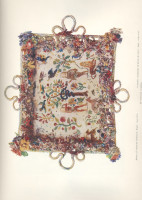
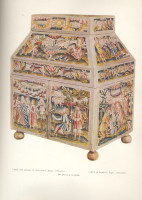
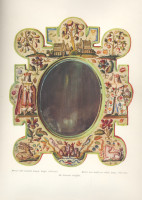
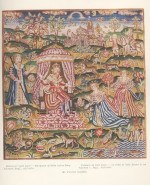
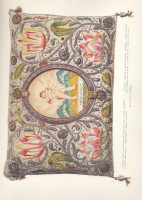
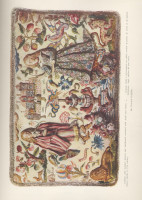
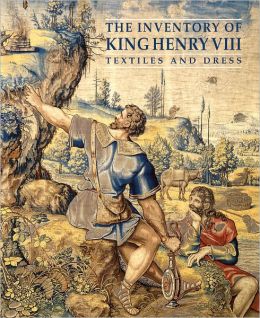 The high point of this Christmas was the appearance of
The high point of this Christmas was the appearance of 